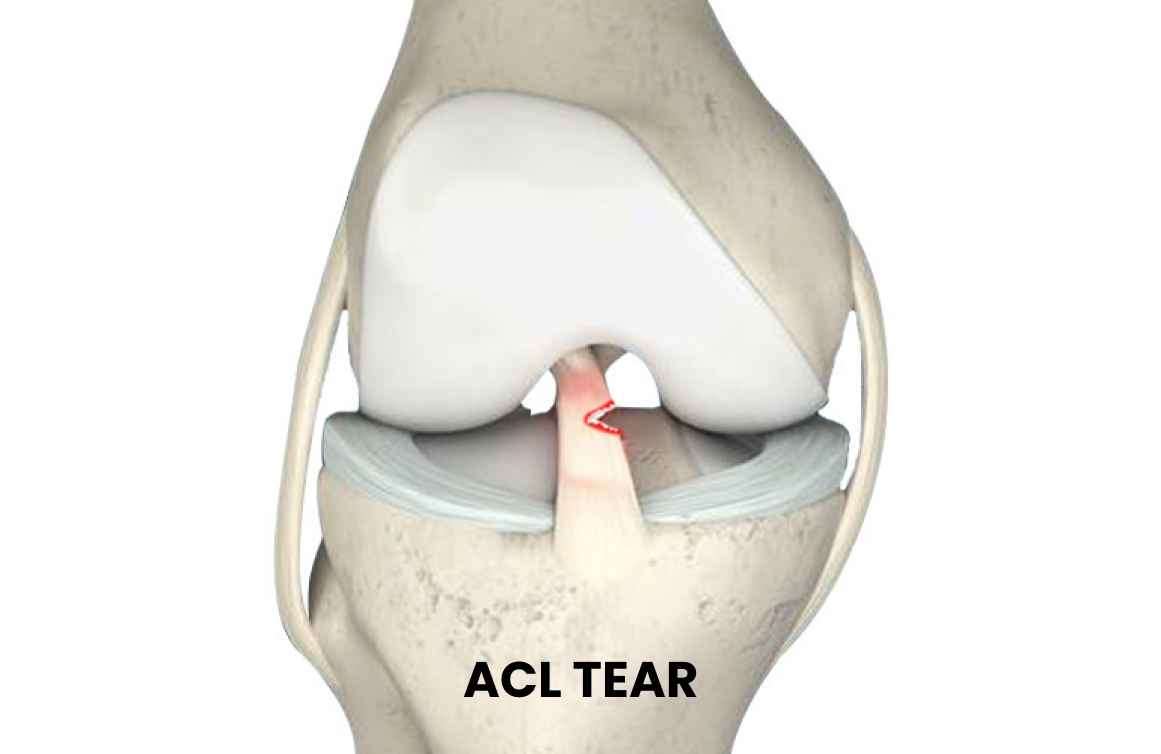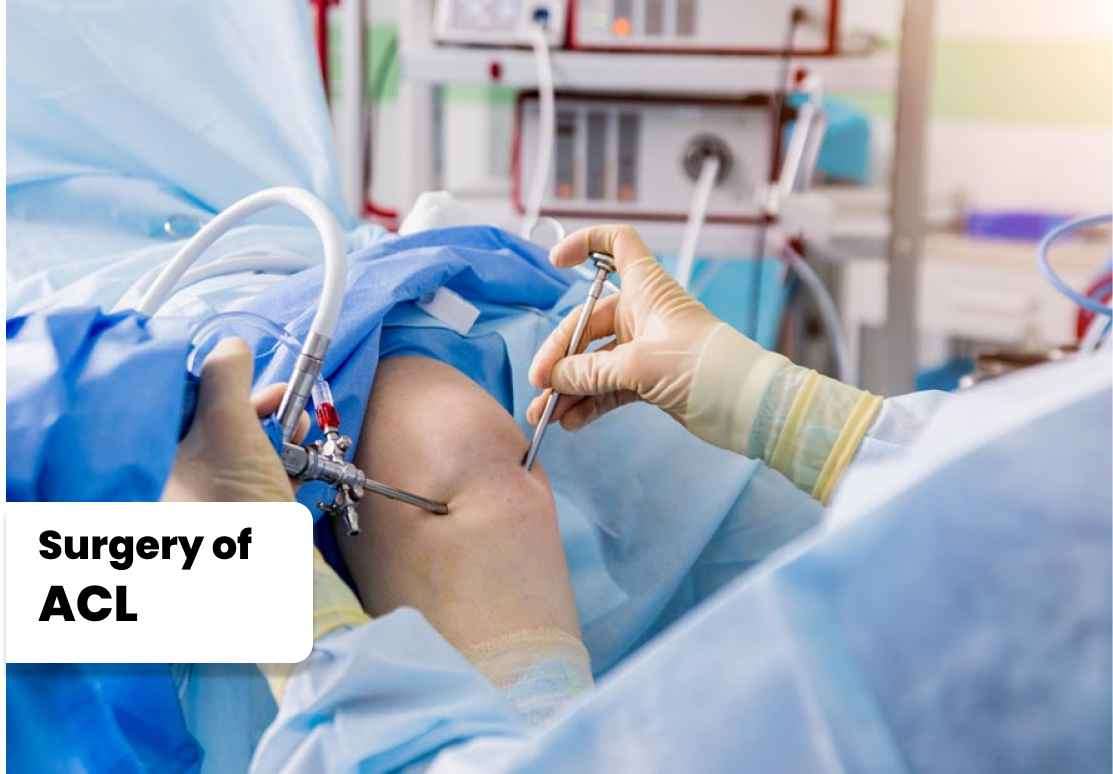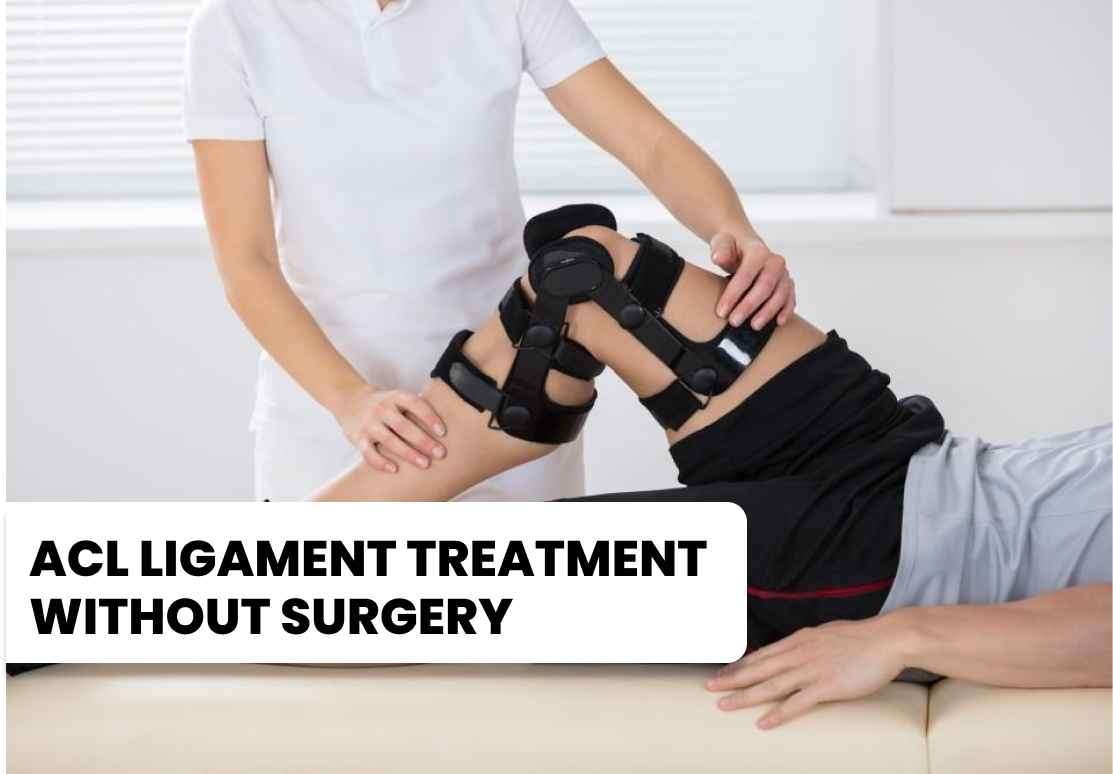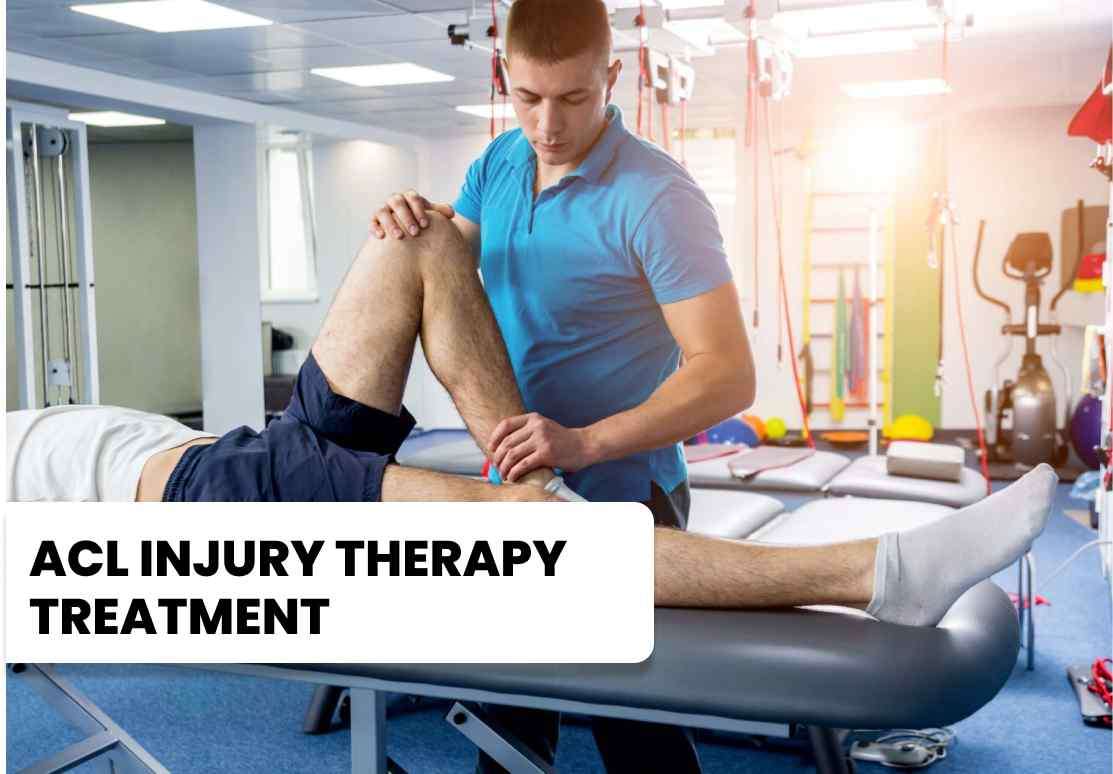An anterior cruciate ligament (ACL) tear is a common knee injury,
particularly among athletes involved in sports that require sudden
changes in direction or jumping.
Call us to book a appointment with the best Ortho specialist near you.

ACL repair surgery, also known as ACL reconstruction, is a common surgical procedure performed to restore the stability and function of the knee joint. During the surgery, the torn ligament is replaced with a graft, usually taken from the patient's own body (autograft) or from a donor (allograft). The graft serves as a scaffold for the growth of new ligament tissue. ACL knee repair surgery is generally recommended for individuals who lead an active lifestyle or engage in sports that require pivoting or quick changes in direction. It aims to restore the knee's stability and reduce the risk of further damage to other structures in the joint. However, it is important to note that surgery may involve risks and require a period of rehabilitation for optimal recovery.

ACL repair surgery, also known as ACL reconstruction, is a common surgical procedure performed to restore the stability and function of the knee joint. During the surgery, the torn ligament is replaced with a graft, usually taken from the patient's own body (autograft) or from a donor (allograft). The graft serves as a scaffold for the growth of new ligament tissue.
ACL knee repair surgery is generally recommended for individuals who lead an active lifestyle or engage in sports that require pivoting or quick changes in direction. It aims to restore the knee's stability and reduce the risk of further damage to other structures in the joint. However, it is important to note that surgery may involve risks and require a period of rehabilitation for optimal recovery.
While ACL repair surgery is a common approach, it is not always the preferred or necessary treatment option for all patients. Some individuals may opt for non-surgical treatments, particularly if they have a partial tear or their lifestyle does not involve high-demand activities. Non-surgical ACL tear treatment typically involves a combination of physical therapy, bracing, and lifestyle modifications. Physical therapy aims to strengthen the muscles around the knee joint and improve stability and range of motion. Bracing can provide additional support and stability to the knee during physical activities. Lifestyle modifications may include avoiding activities that put excessive stress on the knee and opting for low-impact exercises. It is important to note that non-surgical ACL treatment may not completely restore the knee's stability, particularly in cases of complete ACL tears. However, it can still help alleviate pain, improve function, and enable individuals to lead an active life.

While ACL repair surgery is a common approach, it is not always the preferred or necessary treatment option for all patients. Some individuals may opt for non-surgical treatments, particularly if they have a partial tear or their lifestyle does not involve high-demand activities.
Non-surgical ACL tear treatment typically involves a combination of physical therapy, bracing, and lifestyle modifications. Physical therapy aims to strengthen the muscles around the knee joint and improve stability and range of motion. Bracing can provide additional support and stability to the knee during physical activities. Lifestyle modifications may include avoiding activities that put excessive stress on the knee and opting for low-impact exercises.
It is important to note that non-surgical ACL treatment may not completely restore the knee's stability, particularly in cases of complete ACL tears. However, it can still help alleviate pain, improve function, and enable individuals to lead an active life.
In addition to surgical and non-surgical approaches, there are various therapies that can aid in the treatment of ACL injuries. These therapies are often used in conjunction with other treatments to optimize recovery and improve outcomes. Physical Therapy: Physical therapy plays a crucial role in both pre- and post-operative ACL tear treatment. It focuses on strengthening the muscles surrounding the knee joint, improving range of motion, and enhancing overall knee stability. Physical therapists can guide patients through exercises and techniques tailored to their specific needs. Medication: Over-the-counter nonsteroidal anti-inflammatory drugs (NSAIDs) may be recommended to manage pain and reduce inflammation associated with ACL injuries. However, it is important to consult with a healthcare professional before taking any medication to ensure it is safe and appropriate. Regenerative Therapies: Emerging regenerative therapies, such as platelet-rich plasma (PRP) injections and stem cell therapy, are being explored as potential treatments for ACL injuries. These therapies aim to promote tissue healing and regeneration. However, further research is needed to establish their efficacy and long-term benefits.

In addition to surgical and non-surgical approaches, there are various therapies that can aid in the treatment of ACL injuries. These therapies are often used in conjunction with other treatments to optimize recovery and improve outcomes.
Physical Therapy: Physical therapy plays a crucial role in both pre- and post-operative ACL tear treatment. It focuses on strengthening the muscles surrounding the knee joint, improving range of motion, and enhancing overall knee stability. Physical therapists can guide patients through exercises and techniques tailored to their specific needs.
Medication: Over-the-counter nonsteroidal anti-inflammatory drugs (NSAIDs) may be recommended to manage pain and reduce inflammation associated with ACL injuries. However, it is important to consult with a healthcare professional before taking any medication to ensure it is safe and appropriate.
Regenerative Therapies: Emerging regenerative therapies, such as platelet-rich plasma (PRP) injections and stem cell therapy, are being explored as potential treatments for ACL injuries. These therapies aim to promote tissue healing and regeneration. However, further research is needed to establish their efficacy and long-term benefits.
The cost of ACL tear treatment can vary depending on several factors, including the choice between surgical and non-surgical interventions, the type of surgical procedure performed, geographical location, and healthcare provider. In general, ACL repair surgery tends to be more expensive due to the costs associated with the surgical procedure, anesthesia, hospital stay, and post-operative rehabilitation.
Hospital Name | Address | Contact Number |
All India Institute of Medical Sciences (AIIMS) | Ansari Nagar, Aurobindo Marg, New Delhi - 110029 | +91-11-26588500 |
Safdarjung Hospital | Safdarjung Campus, Ansari Nagar, New Delhi - 110029 | +91-11-26165060 |
Post Graduate Institute of Medical Education and Research (PGIMER) | Sector-12, Chandigarh - 160012 | +91-172-2747585 |
King George's Medical University (KGMU) | Chowk, Lucknow, Uttar Pradesh - 226003 | +91-522-2257450 |
All India Institute of Medical Sciences (AIIMS) | Saket Nagar, Bhopal, Madhya Pradesh - 462020 | +91-755-2672355 |
Nizam's Institute of Medical Sciences (NIMS) | Punjagutta, Hyderabad, Telangana - 500082 | +91-40-23489000 |
Government Medical College and Hospital (GMCH) | Sector 32, Chandigarh - 160030 | +91-172-2601023 |
Institute of Medical Sciences (IMS), Banaras Hindu University (BHU) | Lanka, Varanasi, Uttar Pradesh - 221005 | +91-542-2367568 |
Osmania General Hospital | Afzal Gunj, Hyderabad, Telangana - 500012 | +91-40-24600146 |
Government Medical College and Hospital (GMCH) | Sector 32, Chandigarh - 160030 | +91-172-2601023 |
Please Wait..